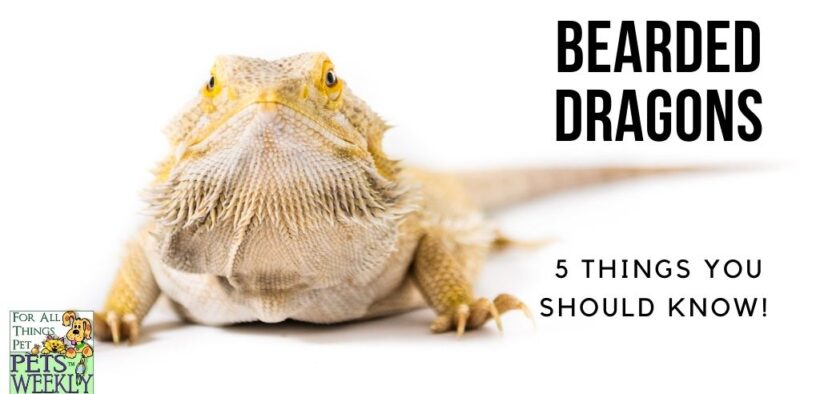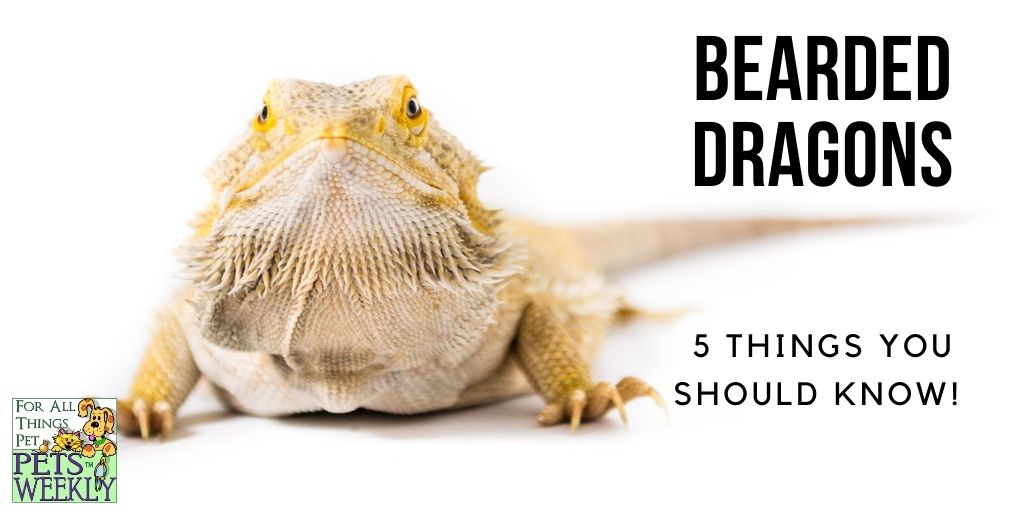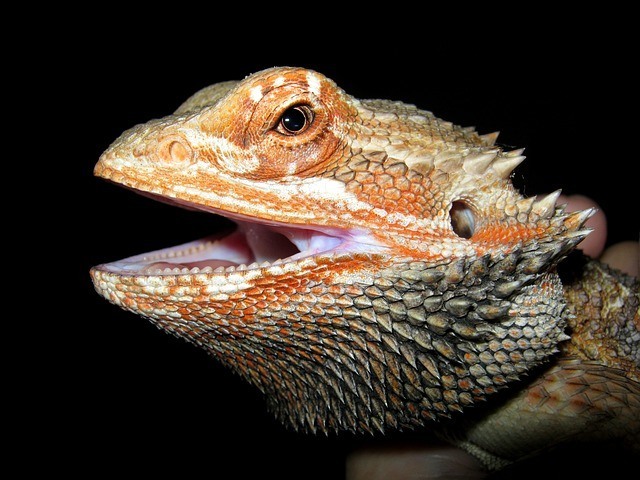5 Things to Know Before Owning a Bearded Dragon
Share


I am often asked what the most popular choice for a reptile pet is, and I can easily say that without any doubt the most popular choice seems to be the bearded dragon. I treat more of them weekly than any other reptile species, combined.
Most bearded dragons that are pets in the United States are bred from captive stock. But, the breed is originally from Australia.
For families who want a pet reptile, these cute lizards tend to make an excellent choice for a first pet. If you are considering bringing a ‘beardie’ into your life, these things are important to know beforehand.
1. They Are Quite Friendly!
Bearded dragons are usually even-tempered and typically recognize their owners’ voices and touch. They like being held and taken out of their cages. In fact, they are usually easy to handle if you can support their flat bodies. Be sure to hold them from underneath, providing a flat surface. Allow them to climb from one hands to another as they move. Show your kids how to do this properly. With proper adult supervision, they make fun pets!
Like Russian Tortoises, bearded dragons carry salmonella on their bodies. This make good hand-washing technique imperative.
2. Why Are They Called “Bearded” Dragons
These lizards have a guttural pouch (skin folds resembling a pouch) underneath their necks. It is covered by small spiny projections that look like a beard. A threatened bearded dragon will flatten its body and puffs out its ‘beard’. Then they will open their mouths in order to look bigger and more threatening to whatever they sense danger from.
The beard exists on both genders and turns jet black when the animal is in a state of stress. However, males normally have darker beards than females (especially during mating season).
If a bearded dragon’s beard is protruding and dark black, it is a sign of distress.
3. They Require Heat, Moisture, and UV Lighting
To absorb phosphorus and calcium in their food, beardies need to develop vitamin D in their skin. This is enabled by exposure to ultraviolet (UV) light during the day. This exposure is vital as it assists proper bone growth and muscle contraction. Vitamin D also helps the operation of most normal metabolic functions.
If they lack enough UV light , the dragons will be forced to receive calcium from their own bones. This, in turn, makes the bones soft and easy to fracture. They will experience muscle tremors due to poor muscle contraction. Eventually, this will lead to organ failure, and death.
The tank they are kept in must range between 70 degrees – 90 degrees farenheit. This allows them to bask in the UV light when needed and cool off when they do not. Reptiles are cold-blooded which means the temperature of their surroundings regulates their temperature. If they are in an area that is too hot or too cold, it can compromise their immune system, metabolism, digestion, and other vital bodily functions.
Remember, caring for your bearded dragon is essential to ensuring they live a happy life.
Humidity is another essential component for beardies to stay hydrated and properly shed their skin. Provide a bowl of water for them to soak in when they feel the need, along with a daily misting/soaking. This should be sufficient for them to get the moisture they need.
If your beardies do not have sufficient humidity, they may retain some of their shed skin. This is especially common around their eyes, which can hinder their ability to see. It’s also common around their toes, which constricts their ability to maneuver around easily.
For these reasons, it is important for a reptile-qualified vet to inspect the pet as well as its living environment.
4. Bearded Lizards are NOT Nocturnal
Many lizards are nocturnal and therefore tend to be the most active at night. But beardies are awake during the day, climbing branches and sitting on logs to absorb UV from sunlight.
People often want to interact with their pets during the daytime hours. However, that can be difficult without disrupting the pet’s sleeping patterns. This is why the bearded lizard is an excellent addition to any family.
5. Bearded Dragons Can Live Between 5-8 Years!
Bearded dragons live 5 to 8 years, making them long-term pets (relatively speaking). There have even been reported instances of beardies living up to 12 to 13 years with exceptional care! So if it’s a long term pet you want, you may have found it in the bearded dragon.
It’s up to you to provide proper care for all of your pets! Talk with your reptile-centric veterinarian before you adopt or purchase one of these friendly pets!

You May Also Enjoy:






